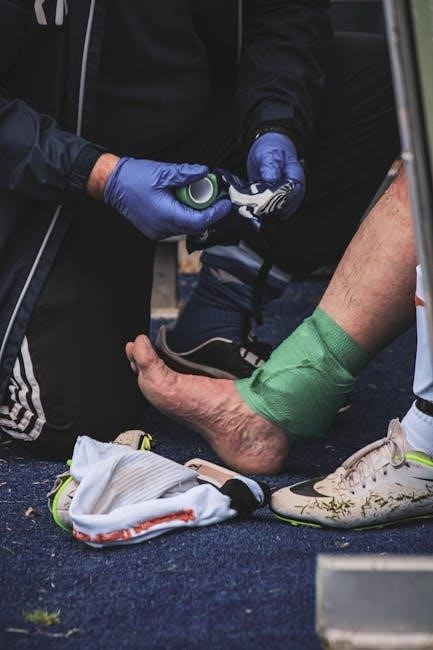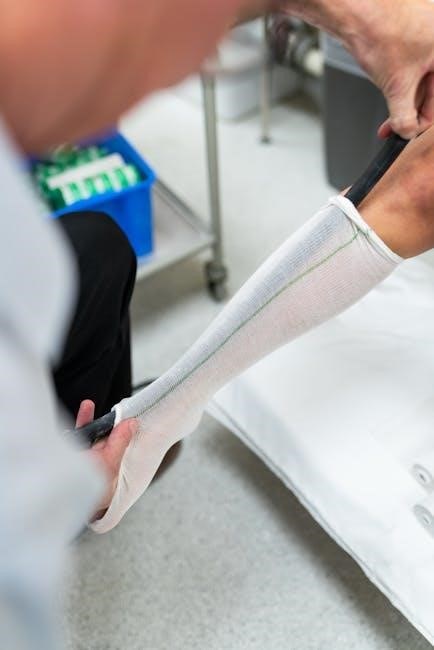Compression socks are specialized footwear designed to improve blood circulation by applying graduated pressure. They are tightest at the ankle and loosen as they go up, helping blood flow back toward the heart. This can reduce swelling, prevent varicose veins, and alleviate symptoms of conditions like POTS. Available in various styles and compression levels, they cater to medical needs, athletic recovery, and everyday comfort. Proper sizing is crucial to ensure effectiveness and comfort.
What Are Compression Socks?
Compression socks are tight-fitting stockings that apply graduated pressure, starting strongest at the ankle and decreasing upward. They improve blood flow, reduce swelling, and prevent varicose veins. Ideal for medical conditions like POTS, DVT, and edema, they also aid athletes in recovery and travelers during long journeys. Available in knee-high, ankle, and thigh-high styles, they offer support tailored to specific needs. Proper fit ensures comfort and effectiveness, with compression levels ranging from mild to firm, depending on use.
Why Are Compression Socks Important?
Compression socks are vital for improving blood circulation, reducing leg swelling, and preventing conditions like varicose veins. They assist individuals with medical conditions, such as deep vein thrombosis and lymphedema, by enhancing venous return. Athletes benefit from faster recovery and reduced muscle fatigue. For travelers, they minimize the risk of blood clots during long flights. Overall, they promote comfort and health, making them essential for various lifestyles and medical needs. Proper sizing ensures their effectiveness and comfort.
Understanding Compression Levels
Compression levels indicate the pressure applied, measured in mmHg, to improve blood circulation, reduce swelling, and support legs. They vary to suit different health needs.
How Compression Levels Are Measured (mmHg)
Compression levels are measured in millimeters of mercury (mmHg), indicating the pressure applied by the socks. This pressure is highest at the ankle and gradually decreases toward the calf. For example, 15-20 mmHg offers mild support, while 30-40 mmHg is used for severe conditions like deep vein thrombosis. Proper measurement ensures the right pressure for effective blood flow without discomfort. Always consult a size chart to match your needs accurately.
Choosing the Right Compression Level for Your Needs
Selecting the correct compression level is crucial for both comfort and effectiveness. Compression levels range from mild (8-15 mmHg) for general wellness to firm (20-30 mmHg) for medical conditions like varicose veins. Higher levels (30-40 mmHg) are reserved for severe issues such as deep vein thrombosis. Start with moderate compression and adjust based on comfort and medical advice. Always consult a professional if unsure, especially for persistent symptoms like swelling or pain. Proper fit ensures optimal benefits and prevents discomfort.
Measuring for Compression Socks
Measuring for compression socks ensures proper fit and effectiveness. Key measurements include foot, ankle, and calf. Measure in the morning when legs are less swollen for accuracy. Use size charts to select the right size.
When to Measure (Time of Day)
The best time to measure for compression socks is in the morning, shortly after waking up. Legs are typically at their smallest due to less swelling. This ensures accurate measurements and proper fit. Measuring later in the day may result in larger sizes due to natural swelling. Consistency is key for reliable sizing. Always measure at the same time to avoid discrepancies and guarantee the best fit for comfort and effectiveness.
Accurate measurements of the foot, ankle, and calf are essential for proper fit. The foot is measured around the widest part, ensuring comfort. The ankle is measured at the narrowest point above the bone. The calf is measured at the widest part, typically 2 inches below the knee. These measurements guide size selection, ensuring the socks provide optimal compression without restricting movement or causing discomfort. Consistency and precision are crucial for the best fit. Activity level, foot shape, and leg circumference significantly impact compression sock fit. Proper measurements ensure optimal comfort and effectiveness without restricting movement or causing discomfort.
Your activity level plays a crucial role in determining the appropriate compression level and sock style. For instance, athletes or highly active individuals may benefit from higher compression levels to support muscle recovery and reduce fatigue. On the other hand, those with less active lifestyles might prefer lighter compression for daily comfort. Additionally, activities like long-distance driving or standing for extended periods require specific sock lengths and compression strengths to prevent swelling and discomfort. It’s important to match your compression needs with your lifestyle to ensure optimal benefits and comfort. Foot and leg shapes can vary significantly, influencing the fit of compression socks. Wider feet, narrower heels, or larger calves may require specific sizes or styles. For example, individuals with wider feet may benefit from socks with a roomier toe box, while those with larger calves might need high-calf or plus-size options. Leg shape variations, such as tapered or muscular legs, can also affect how compression socks sit and feel. Proper sizing ensures comfort, prevents restricted blood flow, and maximizes the benefits of compression therapy. One common mistake is wearing compression socks that are too tight, which can cause discomfort and restrict blood flow instead of improving it. This often happens when individuals choose a size smaller than their actual measurements, leading to red marks or irritation. Proper sizing is essential to ensure the socks provide the intended benefits without causing harm. Always refer to the size chart and consider professional fitting if unsure. Wearing compression socks that are too tight can lead to discomfort, restricted blood flow, and even skin irritation. Tight socks may cause red marks, pain, or swelling, counteracting their intended benefits. If socks feel overly restrictive or leave marks, they are likely too small. This can worsen conditions like varicose veins or edema. Always prioritize proper sizing and consult a professional if unsure to avoid these issues and ensure optimal comfort and effectiveness. Ignoring size charts when selecting compression socks can lead to poor fit, reduced effectiveness, and discomfort. Proper sizing ensures optimal compression levels and prevents issues like restricted blood flow or skin irritation. Always measure your foot, ankle, and calf, and refer to the manufacturer’s size chart to find the best fit. Consulting a professional can also help avoid common mistakes and ensure the socks meet your specific needs for comfort and support. Choosing between knee-high and ankle socks depends on your needs. Knee-high offers more coverage and support, while ankle socks are ideal for specific activities or preferences. Knee-high compression socks provide full calf and shin support, making them ideal for managing swelling and varicose veins. They are often recommended for medical conditions like edema or DVT. Ankle socks, while offering less coverage, are great for everyday wear or sports, as they are more discreet and suitable for individuals with smaller calves or preferences for shorter styles. Both options are effective but serve different purposes based on need and activity level. Compression socks come in various lengths, offering different levels of coverage and support. Knee-high styles provide extensive coverage, supporting calves and shins, while ankle socks focus on the foot and lower leg. Longer socks are ideal for managing swelling and varicose veins, while shorter styles suit everyday wear or sports. Proper fit ensures optimal support without restricting movement, making them suitable for both medical and lifestyle needs. Compression socks require careful consideration of medical needs, activity levels, and personal comfort. They are not a one-size-fits-all solution, as improper fit can lead to discomfort or reduced effectiveness. Regular users should monitor for signs of wear and tear, ensuring optimal performance. Additionally, combining compression socks with other footwear or apparel should be done thoughtfully to avoid compromising their benefits. Always consult a professional if unsure about specific needs or conditions. Proper care extends their lifespan and maintains compression levels. Some users find it comfortable to wear regular socks over compression socks, but this can increase pressure and reduce breathability. It is generally safe if done correctly, but monitor for discomfort or tightness. Overlapping socks may compromise the graduated compression levels, potentially reducing effectiveness. Always prioritize proper fit and consult a professional if unsure about layering or combined usage. Graduating compression levels refer to the varying pressure within the sock, with the highest pressure at the ankle and decreasing as it goes up. This design enhances blood flow back to the heart. Socks typically range from 15-20 mmHg for moderate support to 30-40 mmHg for severe conditions. It’s advisable to start with a lower level and gradually increase as needed. Red marks or discomfort signal the sock may be too tight. Always choose a level that suits your condition and activity level. To read a compression sock size chart, match your foot, ankle, and calf measurements to the corresponding sizes. Ensure proper fit by aligning your measurements accurately. Use the chart to determine the best size for optimal comfort and effectiveness. Always refer to the specific brand’s guidelines for precise sizing. Interpreting measurements involves comparing your foot, ankle, and calf circumferences with the size chart. Each brand provides specific guidelines, ensuring accurate sizing. Measure in the morning when legs are least swollen for the best fit. Use a flexible tape measure to get precise readings. Align your measurements with the chart to determine the correct size, ensuring optimal compression and comfort. Proper interpretation is key to selecting the right pair for your needs. Once you have your measurements, compare them to the size chart provided by the manufacturer. Ensure your foot, ankle, and calf measurements align with the corresponding sizes. Accurate alignment guarantees the correct fit and compression level. If your measurements fall between sizes, opt for the larger size for comfort. Proper matching ensures the sock provides the intended support without restricting movement or causing discomfort. This step is crucial for maximizing the benefits of compression socks. Consult a professional fitter if you experience persistent discomfort, red marks, or swelling. Experts ensure proper sizing and compression, addressing specific medical or personal needs effectively. If your compression socks cause red marks, restrict movement, or fail to reduce swelling, it’s time to seek expert fitting. Professionals ensure proper sizing and compression levels, addressing discomfort and enhancing effectiveness. They also guide on fabric and length options, making sure the socks meet your specific needs for medical or athletic purposes. Regular wearers with recurring issues benefit most from tailored advice to optimize comfort and performance. Professional fitting services provide expert guidance to ensure optimal compression sock fit. Experienced fitters measure your foot, ankle, and calf to determine the perfect size and compression level. They offer personalized recommendations based on your medical needs or lifestyle, such as athletic performance or managing swelling. These services often include follow-ups to ensure long-term comfort and effectiveness, making them ideal for those with specific conditions or complex sizing requirements. Proper fit ensures maximum benefits and prevents discomfort or poor performance. Invest time in finding your perfect fit and maintain your compression socks for optimal performance. Regular washing and proper storage extend their longevity and effectiveness, ensuring continued comfort and support for your legs. Always prioritize your comfort and health by making informed choices tailored to your specific needs. For a perfect fit, measure your legs in the morning when swelling is minimal. Use size charts to match your measurements accurately. Start with moderate compression (15-20 mmHg) and adjust as needed. Avoid socks that cause red marks, as they may be too tight. Prioritize comfort and consult a professional if unsure. Proper fit ensures maximum benefits, preventing discomfort and potential health issues. Regularly check and replace worn-out socks to maintain effectiveness. Your comfort and health depend on making informed, personalized choices. To extend the life of your compression socks, wash them after every use with mild detergent and avoid fabric softeners. Air-dry or tumble dry on low heat to prevent damage. Replace them when elasticity decreases or visible wear occurs. Regularly inspect for holes or runs, as these can reduce effectiveness. Proper care ensures consistent compression and comfort, maintaining their ability to support circulation and prevent swelling. Replace socks every 3-6 months for optimal performance.Key Measurements: Foot, Ankle, and Calf

Factors Influencing Size and Fit
Activity Level and Compression Needs
Foot and Leg Shape Variations
Common Mistakes to Avoid
Wearing Socks That Are Too Tight
Ignoring Size Charts

Determining the Right Length
Knee-High vs. Ankle Socks
Coverage and Support

Special Considerations
Wearing Compression Socks with Other Socks
Graduating Compression Levels

How to Read a Size Chart
Interpreting Measurements and Sizes
Matching Your Measurements to the Chart
When to Consult a Professional
Signs You Need Expert Fitting
Professional Fitting Services
Key Takeaways for Perfect Fit
Maintaining Your Compression Socks
